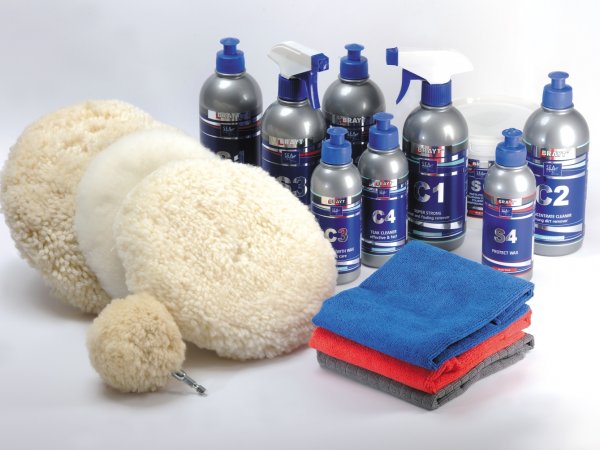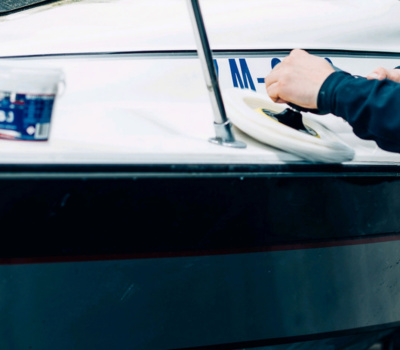Polishing system based on very versatile and easy to work polishing paste and complementary products and materials in the form of lotions, applicators, wipes, I mean everything that is needed to get the best end result.
Polishing paste Brayt® S1 is a very effective polishing agent containing no silicone. Recommended for polishing boat gelcoat surfaces, manufacture of composites and topcoats. It quickly removes defects after sanding with sandpaper, and other damage in use to guarantee receipt of an ideal surface.

The second product recommended for applications is our hobby emulsion Brayt® S2. It is designed to remove any minor surface defects and refresh dark colors, which inherently have a strong tendency to discolour.
To preserve the beautiful effect for a long time to complete our work, we offer liquid Brayt® S3. It is a product for those who want to keep boats to sail always they look beautiful. The liquid S3 is very versatile and its use is very easy. We sprayed surface without worrying about whether it is a gelcoat, paint or glass with a gasket or plastic part. Simply spray, spread it and wipe to a shine.

We are expanding our offer by introducing two new products that will provide boat enthusiasts

Come and join us at METSTRADE 2023, METSTRADE the best event for marine industry professionals,

Visit us and our production plant without traveling

New in the 2023 season is a new polishing wool The new black and white
We do not recommend using universal thinners. The use of a thinner with an unknown composition may result in loss of adhesion, lack of proper flow of paint and varnish defects.
Sea-Line yacht paints are designed for painting the surface of boats and yachts made of various materials, e.g. laminate, wood or steel. We do not have a certificate of the National Institute of Hygiene, which would allow the use of yacht paint to paint the tank with drinking water.